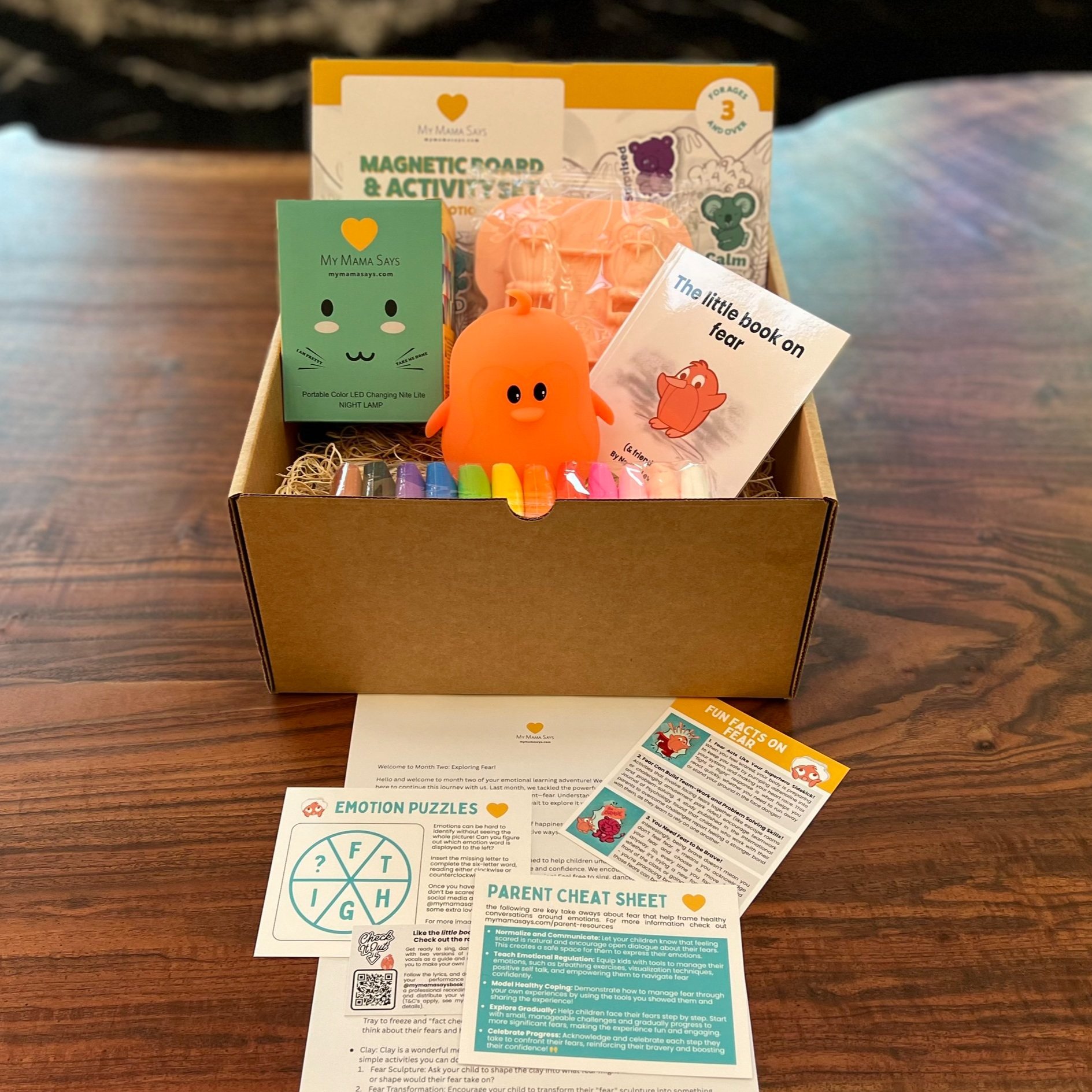
Parent Resources
We recognize that learning happens everywhere, not just in a classroom. The books are designed to start conversations, so here are some key learnings to talk about:
emotions live inside us all the time
emotions do not control us, and we do not control them
emotions are really messengers that are trying to help us by delivering a message (through rewards and alarms)
emotions never come alone, they come in groups -therefore it is important to practice looking past the loudest emotion, so that we can identify and acknowledge all of them!
we direct our emotions to create enough space around them, so we can see what they are signposting for us
there are many tools to help direct our emotions, including:
deep breaths
listening to music
dancing or other exercise
taking a break
asking for help
eating or drinking
asking for a hug
to foster a good relationship with our emotions we can practice identifying, acknowledging and directing them regularly - a good way to do this is through simple daily rituals (think bedtime readings, yoga, journaling, breath work, and emotion inspired play!) and talk about what works for you!
To take it further, try a few of the activities outlined below!
1. Emotion Cookies: Here is a link to a sugar cookie recipe, but add that they should use natural food coloring in different small bowls of icing, then combine them to reflect the chosen emotions.
2. Gratitude Garland: You can do this as a whole family! Think about what you are grateful for or what emotions you would like to reflect for the Thanksgiving dinner, then:
Prepare a variety of shapes from the colored paper, such as hearts, stars, or leaves. Start a conversation about what emotion each color and shape might reflect and why!
Have everyone choose shapes that reflect en emotion they would like to reflect in the garland and encourage them to decorate it accordingly.
Once everyone has finished decorating, use a hole punch to create a hole at the top of each shape. String them together on twine to create a garland.
Hang the completed gratitude garland as a centerpiece or around the dining area, showcasing everyone’s contributions, and encourage everyone to reflect on how it makes them feel!
Materials Needed:
Colored paper (various colors representing different emotions)
Decorative items or objects you don't need anymore! (Think stickers, glitter, baby spoons, coins, twigs, flowers and leaves etc.)
Scissors
Markers or pens
String or twine
Hole punch
3. Emotion Plates: This is a super fun and simple games! When everyone has a plate of food, encourage people to think of an emotion or a given circumstance and have them organize the food on their plate to reflect that! This might mean organizing everything to be a smiley face, or maybe organizing it into rainbow colors, or simply have specific piles of food that describe a location! The magic lies in the creativity, and starting conversations about the decision making - NOT the outcome!
4. Emotional Playlist: Music makes us feel things, so have your family think about what emotions they would like to reflect over thanksgiving, then encourage them to listen to a variety of different songs to find songs that match their chosen emotion! If possible, have them explain why they chose it! Then you can collectively organize it into a playlist that can be shared over dinner!
Art:
Use the coloring book (or create your own) and let your child choose a character. Then have them identify the emotion it represents and color it in to match that emotion. Use this as an opportunity to talk about the emotion, asking:
Where does it live inside of them?
When does it come up for them?
What other emotions would it be friends with?
What might it be signposting for us?
What are the tools we can use to direct them?
Cut out the characters and create your own village on your wall, include stations for tools to direct too (for example include a Music Hall for listening to music, or a Free Hugs bench for a hug etc.)
Creative Writing:
Use the characters in the book or coloring book (or create your own) to write a creative story about the emotion character. You can have this be a single story or you can work on a whole book! Ask you child:
What would happen if this emotion character took over your body for the day?
When have you felt this emotion, what caused it and how did you direct it? This can either be a true story or a made up story.
What is this emotion character’s life. Where do they live? What job do they have? Who are they friends with and why?
Music:
Music is a fabulous tool to both explore emotions and also to direct them, because it makes us feel something.
Ask your child to listen to music and identify what emotions are reflected in it, then assign a song per emotion character.
This playlist can be used as a remote control for them, so they can transition from one emotion to another.
Time to play!
Dance:
Using the playlist created above for each character (or using an emotion theme on a streaming service), arrange a dance party!
Ask your child to think about how each character would move to the music. Have them dance like that character, thinking about where they feel it in their bodies when it comes up? Is it heavy or light somewhere? Alternatively, make it a guessing game! Have your child (or one child at a time if you have more than one) dance as an emotion character without telling anyone who they are. They keep dancing until someone guesses correctly (or you give up!) Tip: If possible, have them explain why they portrayed that emotion in that way.
Theatre:
Play a game of emotional charades!
Have your child or children pick a character and then act them out one by one using body language only (no speaking).
Your family can try and guess what the character is.
Alternatively, try role playing an interaction between two different characters!
Tip: After the exercise, try reflecting with your child about why that was funny or awkward etc.



















